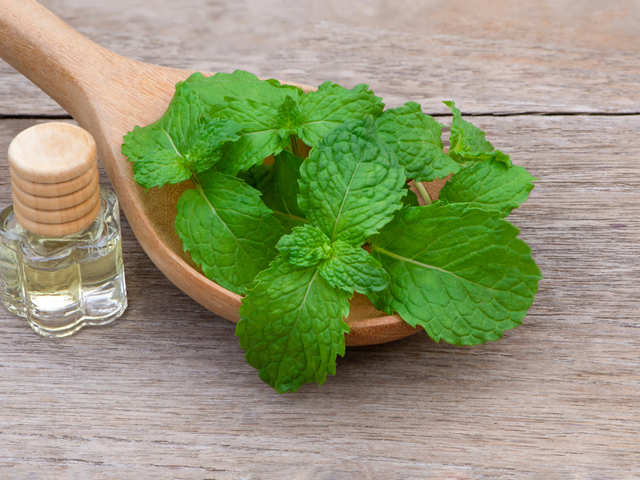Emerging Demand in North-East Asia for Home Grown Mentha oil

Mentha is an essential oil extracted by steam
distillation from Mentha Arvensis leaves, this commodity export value realization
is increasing in recent years globally because of its versatile usage for
variety of application in both food and non-food items.
Mentha leaves are widely used in Indian as
well as well as in foreign countries like China, Japan, South Korea, North
Korea etc. for making it in use in various food items.
The English name of mentha is Mint from family
Lamiaceae with the botanical name of Mentha Piperita L
Mentha leaves and its extracted oil, mentha oil
is widely used and have high economic value in the global market.
Mentha is grown with its roots in the
subtropical & tropical climate predominantly in Uttar Pradesh, Punjab,
Haryana, Himachal Pradesh and Bihar in the month of Feb- March & Harvested
in May-June. Two harvestings are taken from the season crop.
In the value chain system, the product moves
from the farmers to the distiller and then on to the crystallization unit from
where it is exported to the export house.
Many farmers have shown interest in growing the
Mentha crop due to its high demand & prices. At many parts of Uttar Pradesh
and other states, farmers have formed groups called Farmer Producer Organization
for its cultivation to obtain remunerative returns on this commodity.
Comparison with counter country
Today the production of mint is dominated by
India, but before 1950’s production was dominated by Japan, by providing nearly
70% of global supply from an estimated annual production of 800 tons of mint oil,
and the remaining demand was supplied by China. In the mid-1960’s Brazil then
took over the position with the highest supplier, with an annual production of 5,000
tons. Extreme high price and supply upsurge and down surge resulted in the collapse of the Brazilian Mentha production sector and from 1980 to 1985
China re-enter in the market. India entered the global market in the after 1985
and by the mid 1990’s production reached to 6,000 tons and India had taken over
as the dominant supplier to the global market – which it is maintaining today by
being the largest producer in the world.
The odour of Indian Mentha oil is not favourable
compared to Chinese oil but much cheaper in price. Because of the price factor, no oil grower or dealer wants to touch the business in China. They are more
interested to import it from India. Indian Mentha oil is better in quality and
a lot cheaper in prices.
Production by India
Mentha is in huge demand by oral care,
pharmaceutical, perfumery and confectionary sectors. The companies purchase the
mentha oil to make menthol and crystals for utilizing it in the food and
non-food items.
India is the world’s largest producer and
exporter of Mentha oil and its derivatives. At present, the major producer of
mint oil are India, China, Brazil and the US. The total area under cultivation
is expected to be at 2.10 lakh hectare (ha) in 2020 from 1.75 lakh hectare (ha)
during the last year. The total production is expected to 50,000 to 60,000
tons. Last year the production was around 48,000 tons to 50,000 tons. India
annually exports 70% of domestic production.
Uttar Pradesh records around 80% of the production of mentha oil as the highest producing state in the country

Demand in North East Countries
Demand for mint & mint oil is expected to
continue to rise. Mint demand is directly dependent on the overall growth of the broad category of fast-moving consumer goods (FMCG) in which mint as an
ingredient is used- Chewing gums, Households, Cosmetics (Mouthwash, Toothpaste,
Soaps, Shampoos, Shaving Creams etc.) Medicinal etc. are continuing to show big
growth. Overall it can be estimated that the demand continues to increase by
3-5% a year on year basis. In this scale of the market in North-East Asia, this
is a substantial additional volume that is required by the North East Asia
market and creates significant opportunities for India.
Financial Aspects
Looking at the financial aspects of mentha crop. It is considered as the short duration cash crop in India. There is
around 75% gross profit in the Mentha production to the farmers. The sudden surge in
demand for Mentha oil in the various medicinal and cosmetic industry it gives the
higher returns to the farmers. The price of Mentha ranges from Rs 1100 to 1500
per kg based on the seasonal demand and supply in the market. Sometime in the
surging demand, it is as high as Rs 1600 per kg in the trading market.
References
- https://www.thehindubusinessline.com/opinion/columns/g-chandrashekhar/Mentha-oil-Growing-demand/article20393527.ece#
- http://www.farwestspearmint.org/uploads/5/5/0/6/55065965/china_2015.pdf
- http://www.vermaagri.com/mentha-production
- https://timesofindia.indiatimes.com/city/lucknow/Mentha-cultivation-set-to-rise-again/articleshow/18520926.cms
- http://www.intracen.org/uploadedFiles/intracenorg/Content/Exporters/Market_Data_and_Information/Market_information/Market_Insider/Essential_Oils/An%20overview%20of%20Mentha%20arvensis.pdf
Nice
ReplyDeleteGodd job.
ReplyDeleteNice Deepanshu
ReplyDeleteGood work done!
ReplyDelete